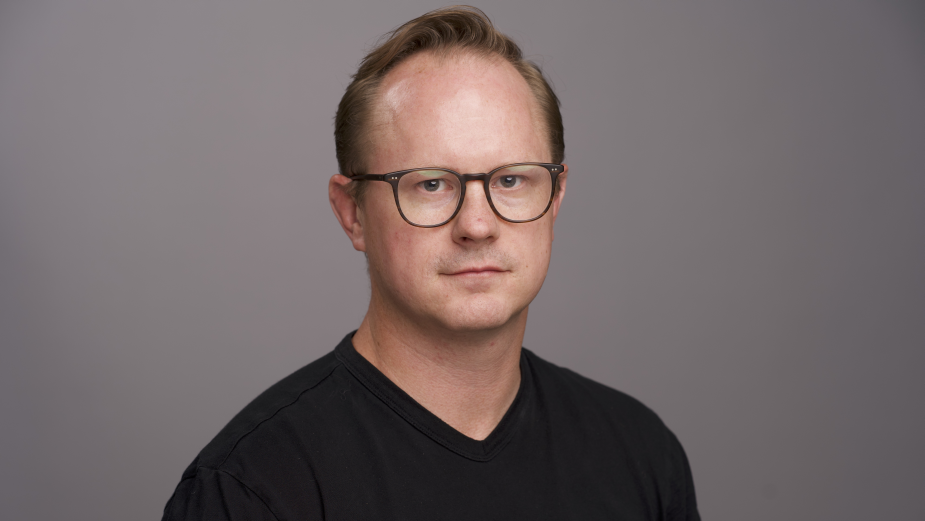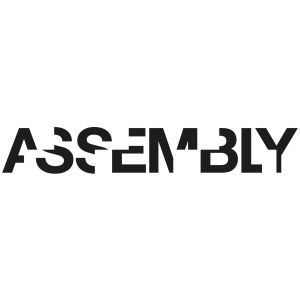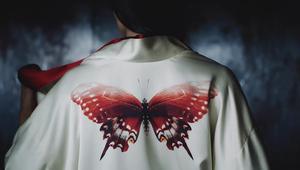
Making the Grade: Finding the Look with Sean Dunckley

Sean Dunckley brings a versatile and nuanced approach to every project. Comfortable in commercials, episodic and feature films, he has established himself as a premier colourist in the industry. Sean’s deep love for storytelling has helped him create long standing relationships with some of the most respected directors and DPs in the world. Recent credits include all three seasons of Apples ‘Dickinson’, the Amazon anthology series ‘Modern Love’ and the Sundance hit ‘The Night House.’
LBB> What was your first experience with the world of colour grading – and when did you decide that being a colourist was a role that you wanted to pursue?
Sean> It was really by accident. When I was in film school I really enjoyed editing and thought that was the path I would take. In the early 2000s colour timing was still a very analog part of the post process so there wasn't much access to the timing in school. My junior year I took an internship at Manhattan Transfer thinking I would get more exposure to editing. I quickly learned there was a whole other world to post that I didn’t know existed. I was intrigued by the technical process of loading film on telecines and transferring it to tape but what really amazed me was what these Colorists were doing with the image on the monitors. I knew right away this was where I wanted to be. Manhattan Transfer turned into Company 3 and the day I graduated school I called up asked for a job.
LBB> What was the project that you felt really changed your career?
Sean> I’d say there are two projects that helped me take my career to the next level. I did dailies on Disney’s 'The Sorcerer's Apprentice'. The DP on that film was Bojan Bazelli who is such an incredible cinematographer. Bojan came into the dailies room every morning at 5am to colour through dailies with me. Sitting with Bojan for 100 shoot days going through every set up taught me so much. The second opportunity would have been Season 2 of the HBO series 'Girls'. The DP on that was Tim Ives. Tim and I had worked on some commercials before and I had done dailies for him on other shows. Tim advocated for me to be the finishing colorist on the show which was a huge opportunity and really the start of where I am today.
LBB> How/where did you hone your craft and did you have any particular mentors?
Sean> All of the colourists that I have worked for or with have helped to hone my skills in some way. I spent most of my early years assisting Tim Masick so I’d say I absorbed the most from his crafting of an image. I’d be remiss to not put Tom Poole, Billy Gabor, John Bonta, Ian Vertovec and Corrine Bogdanowicz on a list of mentors.
LBB> Tell us more about your creative process - (e.g.when you get a project, how do you go about developing a look?)
Sean> This really changes for every project. The ideal project has me involved from the beginning. I love to be involved in developing a look during the early camera tests and creating a show LUT for dailies. A look to me is all about communication and collaboration. I’ll sit down with a cinematographer and let them tell me about the look they envision. Then I’ll go away for a little and develop 5-6 different interpretations of that look. From there we huddle up again and decide if one is the right direction. It’s often that we end up mixing different looks to get something right.
LBB> From experience, we’ve found that colourists often love art and photography - when you’re out of the studio, what inspires you?
Sean> Yeah, I’d agree, art and photography are a great passion of mine and such an inspiration for my work. It might be silly, but I’d also say that Instagram has a strong influence currently. I have an account that follows just cinematographers and other colorists. I am so impressed daily by the images posted by my colleagues across the industry.
LBB> Colour grading is largely a digital affair, but there’s also been a resurgence of film over the past few years in commercials and music videos. What are your thoughts about working on film versus digital formats like 4K? And what are your favourite techniques for capturing a vintage or tactile feel?
Sean> I feel like the film vs digital narrative is so independent to each project. I love working on both formats and also love the challenge of making each feel alike. I don’t believe there is a single formula that can make something digital look exactly like film but instead its about putting enough attributes into the image that bring out that emotion the creatives want. My tastes lead towards adding rich colors and a little texture to most projects. Sometimes projects call for a step further with flashed blacks, halation and gate weave. It’s really about those early conversations with the creatives and understanding why they are trying to replicate film and how many pieces to add before it becomes distracting to the story.
LBB> How do you ensure that each colourist-director partnership is a success?
Sean> Again, I think it comes down to communicating. My favorite projects are those where I listened and tried something out of my comfort zone. Those collaborations where everyone brings ideas to the table are the most fulfilling and most times yield the best product.
LBB> What advice would you give to budding colourist?
Sean> Learn more than just colour box. Learn about lighting, lenses and cameras. Learn about writing and character development. Learn about blocking, eye levels and editing. The people you’ll be spending your time with are experts in this stuff and learning their craft will help you find their vision.
LBB> In your opinion, what’s difference between a good grade and a great grade?
Sean> This is simple to me. A good grade gets by. A great grade helps elevate the story.
LBB> How is the craft and trade of colour grading changing?
Sean> Covid changed the game. We were forced to figure out how to color remote, which seemed impossible before. In longform with DP’s jumping from one project to the next and schedules all over the place remote grading helps us keep them involved. I can stream a very good image to their iPad for notes while they are prepping their next project in a different city. It's really incredible the technical advances made over the last 2 years and how that can be a benefit to a film.













